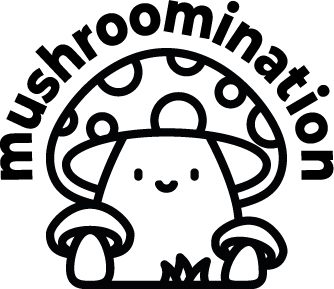
At the end of July, I had a beautiful stay at a retreat centre in Laragh, near Glendalough taking time away to meditate and look after myself. I took advantage of my beautful surroundings and went for a walk along the Wicklow Way. The area I was walking in was a mixed deciduous woodland, with lots of beautiful diversity along the way, gorgeous ferns, moss, foxgloves and lichen, to name a tiny smidegon of what was there.


I was delighted to spot these little white mushrooms tucked under moss near some oak trees. There were a few dotted along closer to the path, which I thought I would investigate. I’m not sure why, but when I carefully took it from the ground I wondered if it was a milkcap, so I ran my fingernail along the gills and sure enough there was some milky fluid that appeared. I tasted it, and sure enough it had a peppery taste.

I had brought my trusty Patrick Harding Collins Gem book with me, so had a look when I returned to my accommodation. Patrick describes Lactifluus piperatus as ‘ivory white, matt, funnel-shaped cap with an inrolled margin’ and the gills as ‘very crowded’ and exuding an ‘acrid milk when damaged’. The habitat, the crowded gills and the milk all aligned, although I didn’t think it was too pungent. The description of it having a funnel shaped cap is what was making me doubt as these were all domed caps, though I knew that it could have just been a younger stage. The lookalike stated was Lactarius velleus, which doesn’t have such crowded gills and has a fleecy cap.

Returning home I attempted a spore print, which resulted in some barely visible white smudges, which could have been from a mould growing on it. It did allow me to see that it had aged an ochrey yellow, true to a description in my Collins Complete Guide to British Mushrooms & Toadstools. However, again, the image shown and the description said ‘convex with a depressed centre’.
On my mushroomy journey, I have learned from books, a couple of forays with experts, websites, but perhaps, most of all, putting it together, I have learned from Facebook groups. There are a wealth of incredibly generous, verifiable, experts in certain groups, and I owe alot to Mushroom Spotters UK and more recently Mushroom Foraging Ireland. I don’t post a lot, but seeing others and the way and why they determine a fungus to be a certain type, is knowledge that cannot be undervalued. So with my humility firmly in check, I posted this, with as much information as I could and a very knowledgeable person got back to me to say they agreed but also informed me that ‘Lactifluus glaucescens is macromorphologicaly identical apart from its milk drying greenish although that’s not reliable and micro would be needed to separate the two.’ I hadn’t come across this information in any of my books, so there I have it, probably right, but with no microscope skills (yet) I will never know. What a huge motivation for learning how to prepare my own slides, and potentially, invest ina better microscope.
National Biodiversity Centre has 9 records, 4 in Dublin, 2 in Kerry, 1 in Galway and 2 in Donegal, the earliest being 1936 – the one in Kerry, the most recent in 2011.
Basic Profile
Scientific name: Lactifluus piperatus / Lactarius piperatus
Common names: Peppery milkcap
Size of fruiting body: 4-8cm tall, 8-15cm wide
Spores: 8-9 x 6-7 µm
Gills: Very crowded, thin, cream coloured, decurrent
Edibility: ‘Dried specimens can be used as seasoning’ Patrick Harding said.
Lookalikes:
On the Red Data List (extinct/critically endangered/endangered/vulnerable/near threatened): No
References:
Cate2 Database, managed and maintained by The Fungus Conservation Trust
National Biodiversity Data Centre
Red Data List, British Mycological Society
http://iucn.ekoo.se/, The Global Fungal Red List Initiative
Collins Complete Guide to British Mushrooms & Toadstools, Paul Sterry & Barry Hughes, 2009
Mushrooms and Toadstools of Britain and Europe, Edmund Garnweidner, 1994
Mushrooms, Patrick Hardy, 2013
The Encyclopedia of Fungi of Britain and Europe, Mi

